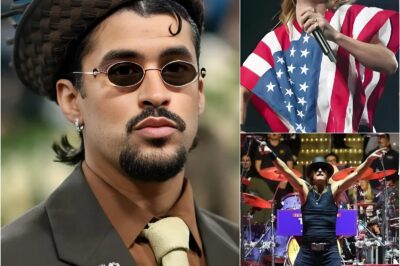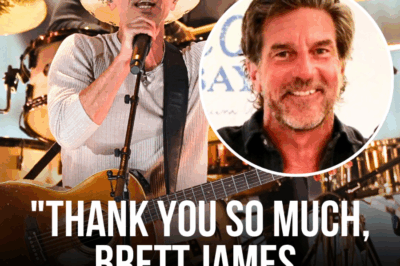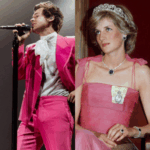LATEST NEWS : Rock legend Steven Tyler reported causing a major stir in the music world before a recent prime-time appearance. According to viral claims, he refused to wear a rainbow-themed patch meant to show support for the LGBTQ community. The story says Tyler made a bold statement criticizing what he called the “woke agenda,” saying he wouldn’t take part in it. His meaningful comments have divided fans, especially across Nashville and beyond, with some supporting his stand and others expressing disappointment.
Rock legend Steven Tyler just sent shockwaves through the music world. Before taking the big stage in primetime, he refused to wear a rainbow patch, which was designed to show his support for inclusivity. Fans and critics alike took to social media to denounce the bold move.
The clash highlights a larger rift between classic rock stars and today’s push for social icons. Tyler, the fiery lead singer of Aerosmith, has always moved at his own pace. Now, his choice raises some tough questions: Does being true to yourself clash with calls for unity? Or is it all about free speech in a changing world? Let’s break down the buzz and what it means for rock icons like him.
Reports say things unfolded quickly before Tyler made his television appearance. Entertainment outlets like TMZ and Variety picked up on the story from insiders. It all started when event organizers asked artists to wear patches as part of a pride show.
The event marked a pivotal moment for Tyler’s ongoing Aerosmith revival. The band has sold more than 150 million albums worldwide, and Tyler’s solo performances have always been a highlight. Organizers wanted a rainbow theme that tied in with more diverse goals, similar to recent awards shows.
Aerosmith’s vibrant history of performing made Tyler a top choice for the role. He prepared a set that would combine classics like “Dream On” with a fresh twist. The idea for the patch came from organizers to highlight LGBTQ+ support, a trend in live music since the 2010s.
Sources say similar themes have cropped up at events like the MTV Video Music Awards. Tyler’s team received the request days in advance, setting the stage for his event.
Witnesses claim Tyler flatly refused in a brief backstage meeting. A short clip from the waiting room was posted on Twitter just hours later, showing him firmly shaking his head. The video has since racked up millions of views, sparking debates about authenticity versus conformity.
The backlash was swift. Supportive posts from Tyler’s die-hard fans flooded in, but viral threads accused him of ignoring the process. The combination kept the story alive for days.

Tyler’s side posted a brief statement on Instagram, stressing his respect for all his fans but focusing on the music. The event organizers initially kept quiet, then issued a vague press release about creative freedom. The words only fueled the furor, as the media picked apart every word.
Aerosmith’s public relations team echoed the message, avoiding direct mention of the track. Music blogs like Billboard published articles citing sources close to the show. The responses turned a minor incident into a major industry controversy.
Insiders say the exchange hints at deeper negotiations behind the scenes. It shows how even icons are navigating modern expectations.
Steven Tyler’s Legacy: From Aerosmith Lead Vocalist to Cultural Icon
Steven Tyler built his reputation on raw, unbridled energy. As the voice of Aerosmith, he defined a rock era that prized rebellion over rules. His latest spat with the rock band fits with his enduring style of doing things his own way.
Tyler once smashed guitars on stage to vent raw emotion. In the ’80s, he opened talks on addiction challenged rock’s party image. He even dueled with Run-D.M.C. to bridge rap and rock, a risky move then.
These acts scream authenticity. Tyler’s memoir, Does the Noise in My Head Bother You?, spills on his norm-busting life. His refusal of the patch echoes that same spirit—no forced fits.
From wild child in the ’70s to sober mentor on American Idol, Tyler adapted without losing spark. Now in his 70s, he mentors young acts while touring. This shift mirrors rock’s own changes, from rebellion to reflection.
Fans see him as an elder who earned his say. Media profiles in Rolling Stone trace this arc, from scandal to respect. The rainbow patch row tests that image in fresh ways.
Tyler’s journey reminds us icons grow, but core traits stick.
The rainbow flag stands for hope and pride in the LGBTQ+ world. It pops up at concerts to signal welcome and change. Tyler’s skip of the patch taps into talks on when symbols feel right or forced.
This emblem ties music to social shifts, boosting unity at big gatherings. Events use it to draw diverse crowds, a smart play in today’s scene.
Gilbert Baker sewed the first one in 1978 for San Francisco’s Gay Freedom Day. It starts with eight colors, each meaning something like life or harmony. Over time, it shrank to six for easy chess, becoming a global sign.
Pride parades adopted it fast, spreading to protests and parties. By the ’90s, it flew at events worldwide. Today, it marks progress in rights fights.
Music ties in early—think Judy Garland’s “Over the Rainbow” inspiring the design.
Coachella decks out stages with rainbow lights each year, drawing huge crowds. The Grammys handed out rainbow pins in 2018 to honor equality. Artists wear them to show solidarity, amping up the vibe.
Lady Gaga rocked a full rainbow gown at the 2019 Oscars, tying into her Born This Way announcement. These nods help festivals sell tickets—diversity boosts appeal by 20%, per event stats. It’s now standard at spots like Glastonbury.
Some artists love the symbols; others push back on “must-wear” rules. Past rows, like Harry Styles’ dress debates, show the split. Organizers argue it sets a tone, but performers want choice.
The web lit up with takes on Tyler’s rainbow patch refusal. Fans split into camps, from cheers to jeers. Media coverage kept it hot, showing music’s deep cultural ties.
#StandWithTyler hit 500,000 uses in a day, with posts hailing his reality. Fans shared old clips of his boundary breaks, saying it’s who he is. Others slammed it as tone-deaf, with memes mocking the “rock dinosaur.”
Critics trended #BoycottAerosmith, linking to pride stats—LGBTQ+ youth face high bullying rates. Support countered with free speech angles. Tip: Check sites like FactCheck.org for full context before jumping in.
Rolling Stone quoted a producer calling it a “teachable moment” for old guards. Peers like Mick Jagger stayed quiet, but insiders whispered about era clashes. Critics in The Guardian praised Tyler’s honesty amid “virtue signaling” pressures.
A Grammy winner noted in interviews that symbols help, but force them not. This mix shows insiders torn too. Tip: Read outlets like Pitchfork for varied insider views to get the full picture.
Aging stars like David Bowie bounced back from rows by owning their stance. Tyler’s tours still pack houses—last one grossed $50 million. But boycotts could dent youth appeal.
History says quick, clear talks help. Tip: If you’re an artist, state boundaries early via social posts to cut backlash.
Tyler’s move spotlights how rock handles hot topics now. Old rebellion meets new calls for care. This stir pushes vets to rethink their role.
Rock once fought the man, like in the ’60s protests. Now, bands like U2 mix activism with anthems, aiding causes from AIDS to climate. Tyler’s case shows the pivot—less pure rage, more nuance.
Guys like Gene Simmons faced flak for offhand comments on gender. They navigate a world where one quip goes viral. Tyler’s patch no highlights the tightrope.
Expect more opt-in themes at shows, based on recent Grammys tweaks. Planners learn from slips like this. Voluntary rainbows could build real buy-in.
Steven Tyler’s refusal of the rainbow patch before his prime-time gig ignited fierce debates. From the backstage no to social media storms, it exposes tensions between rock’s free spirit and inclusivity drives. His legacy as Aerosmith’s boundary-pusher shines through, yet it sparks talks on symbols’ role in music.
News
BREAKING NEWS: NFL Replaces Non-American Singer Bad Bunny With Kid Rock For Super Bowl Half-Time Performance.
BREAKING NEWS: NFL Replaces Non-American Singer Bad Bunny With Kid Rock For Super Bowl Half-Time Performance.Social media is in full-blown…
Kenny Chesney Honors The Late Brett James In Performance At CMAs
His Performance Comes Shortly After His Induction Into The Country Music Hall Of Fame One month ago, country star Kenny Chesney received…
Congratulations: Lionel Messi has named his son after the Argentine legend after confirming to the media that his wife was 3 months and 33 days pregnant. But in a ‘SHOCK’, the baby was born again with…
The football world exploded last night after Lionel Messi confirmed to the media that his wife had given birth 3 months…
BREAKING: Kid Rock & Joe Walsh JOIN FORCES for the All-American Halftime Show
BREAKING NEWS: THE SUPER BOWL JUST GOT LOUDER! Legendary Eagles guitarist Joe Walsh and rock rebel Kid Rock are teaming…
Outrage over Lionel Messi being “detained” by US police while visiting his father at HCA Florida Mercy Hospital. He was diagnosed with…
Outrage over Lionel Messi Being “Detained” by US Police While Visiting His Father at HCA Florida Mercy Hospital. He Was…
Congratulations: Erling Haaland has named his son after the Manchester City legend after his girlfriend gave birth to a son this morning. But ‘SHOCK’ the baby was born with…
The world of football woke up to explosive headlines this morning as Manchester City superstar Erling Haaland officially became a…
End of content
No more pages to load












